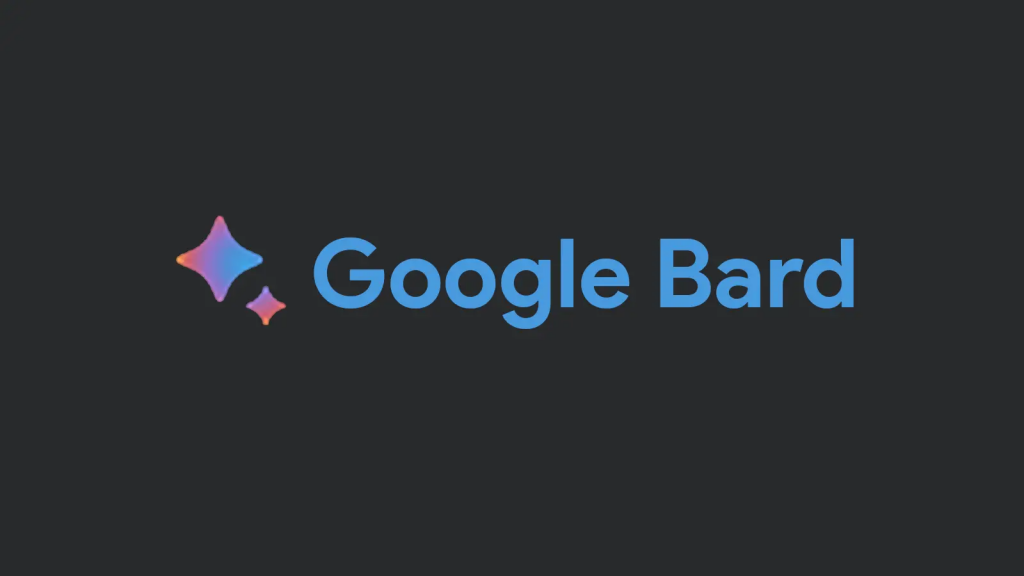
Are you considering using Google’s Bard AI? Our comprehensive Google Bard AI review will provide insights into its performance, uses, and potential drawbacks.
Artificial Intelligence (AI) has come a long way, evolving rapidly. At the forefront of these advancements is Google, a tech giant known for its innovative applications. One such application that has garnered attention is Bard AI.
This tool, designed for language generation, demonstrates significant strides in AI capabilities and implications for the future. This Google Bard review delves into Bard AI, exploring its development, capabilities, applications, user experiences, and more.
Table of Contents
How Was Bard AI Developed?
Initial Idea and Conception
Bard AI was born out of a desire to push the boundaries of AI’s creative potential. While AI has shown capabilities in tasks like translation and information retrieval, the development team at Google aimed to see if AI could mimic human-like creativity in crafting songs and poetry.
They wanted to go beyond just stringing together rhyming words— the goal was to make AI understand and apply literary devices much like a human would.
Technical Aspects
The conception of Bard AI was built on a foundation of machine learning algorithms and natural language processing techniques.
The large quantity of training data enable this tool to understand different writing styles, tones, and contexts. A key aspect of its training was the ability to understand and generate content using literary devices such as metaphors, similes, and personification.
The Team
The Bard AI team consisted of a diverse group of engineers, data scientists, and product designers. Their collective vision was to create an AI tool that could inspire users to create and engage with language in new and innovative ways. Jack Krawczyk led the team of engineers and scientists at Google AI.
What Can Bard AI Do?
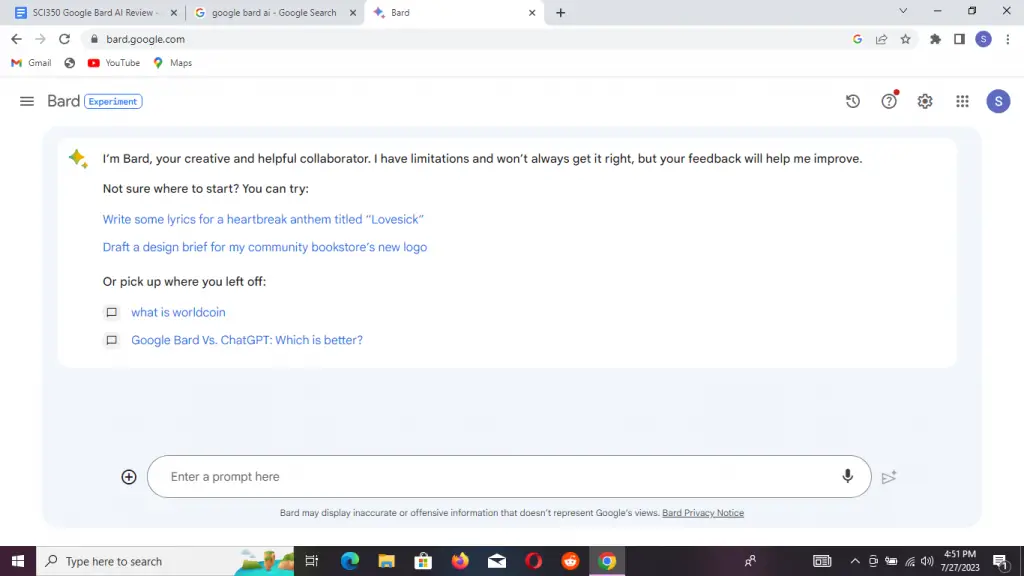
Features
Google Bard AI, an advanced AI language model developed by Google, boasts a range of sophisticated features, designed to optimize user experience and address a wide array of tasks.
Here’s an in-depth look at its primary features:
#1. Multilingual Capabilities
Google Bard AI can communicate in more than 40 languages, making it one of the best chat tools. Its ability to understand, generate, and translate between languages makes it invaluable for cross-cultural communication and information exchange.
#2. Image and Video Analysis
Bard AI’s capability extends beyond text-based interactions. It can analyze and understand images and videos, extracting relevant information to answer queries.
This feature proves useful in various scenarios, including content moderation, video description generation, or understanding visual context within a conversation.
#3. Response Customization
Bard AI tailors its responses according to users’ preferences and the context of the conversation, providing a personalized and intuitive experience. This flexibility allows Bard to be equally effective across casual chats, technical discussions, or formal business communications.
#4. Conversation Sharing
Bard AI offers conversation sharing, enabling users to collaborate by sharing their AI interactions. This feature facilitates brainstorming sessions, group discussions, or simply sharing interesting insights generated by the AI.
#5. Voice-Based Interactions
Google Bard AI supports voice interactions, providing a convenient hands-free option for users. Whether you’re dictating notes, asking questions, or giving commands, Bard’s voice-based interface makes these tasks seamless.
#6. Code Generation
This AI tool can generate code in over 20 programming languages. This feature can help in debugging, learning new programming languages, or even automating certain code writing tasks.
#7. Improved Summarization
Bard AI can digest large volumes of text and generate concise summaries, saving users time and effort. Whether it’s summarizing news articles, research papers, or lengthy reports, Bard offers a quick overview of essential points.
#8. Increased Visibility for Sourced Content
To maintain transparency and facilitate fact-checking, Bard AI highlights and links to the sources of information used in its responses. This feature not only reinforces the credibility of Bard’s responses but also allows users to delve deeper into topics of interest.
#9. Global Expansion
Bard AI has expanded its reach to over 180 countries, aiming to democratize access to advanced AI technology. This expansion allows users worldwide to utilize Bard’s features, regardless of their location.
Here is a list of the best academic writing tools for researchers.
Are There Real-World Examples of Bard AI Assisting in Creative Work?
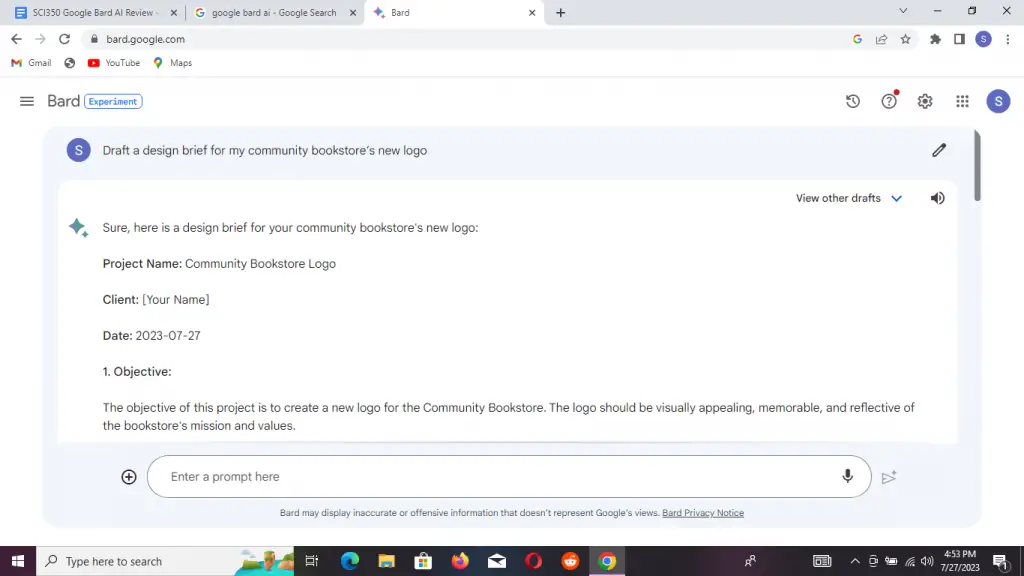
Despite still being under development, Bard AI has already found practical applications in the real world. Artists and creatives are beginning to incorporate Bard AI into their workflow, using its unique capabilities to fuel their creative output.
From generating lyrics for a song to crafting a compelling narrative for a story, Bard AI is proving to be a powerful ally in the creative realm.
How Does Bard AI Compare with Previous Google AI Models and Other Competitors?
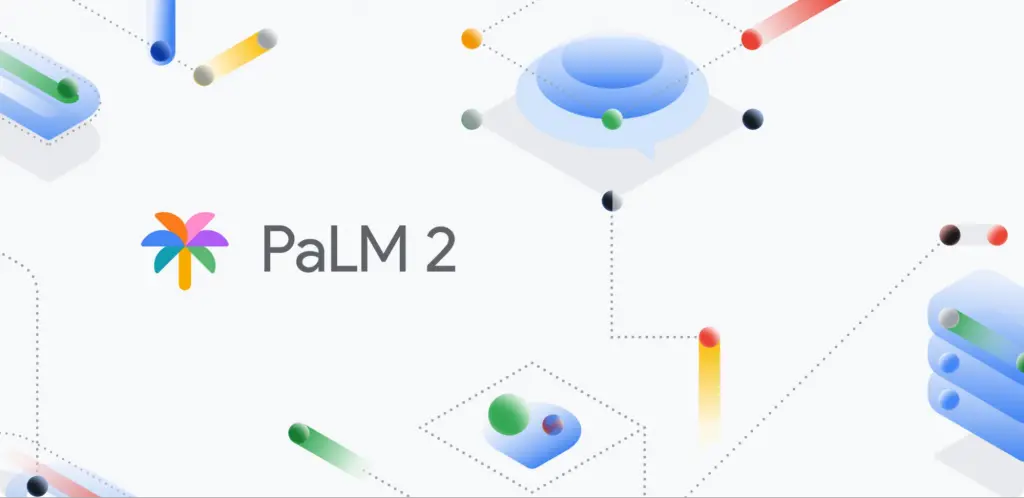
Google’s Journey in AI Leading Up to Bard AI
While Google Bard AI represents a novel and experimental approach to AI, it certainly stands on the shoulders of Google’s extensive history and expertise in AI and machine learning.
Bard AI, although in its experimental phase, leverages Google’s past AI advancements. It uses Google’s powerful language understanding capabilities, developed and refined through models like BERT and T5.
However, Bard AI represents a fresh direction for Google’s AI journey, focusing on the generation of creative content such as poetry, prose, and song lyrics rather than informational or transactional content.
Bard AI’s Place in the Competitive AI Landscape
Bard AI introduces a unique application of AI to the market that sets it apart from many existing AI models.
As the first of its kind from Google, Bard AI fills a unique niche in the AI landscape. It stands out not only among Google’s own portfolio of AI models but also in the broader AI market.
In terms of comparison with other creative language generation AI tools, Bard AI is still in an experimental phase. As it continues to evolve, it will undoubtedly offer more refined and robust features.
With Google’s continuous commitment to AI advancement, Bard AI is poised to remain at the cutting edge of creative AI technology.
What’s My Experience With Google Bard AI?
I set out to test this AI tool’s capabilities by prompting it to write about a specific topic: the cryptocurrency known as Worldcoin. To my satisfaction, Bard delivered an extensive and thorough answer, painting a complete picture of this complex subject.

But I didn’t stop there; I decided to test its current affairs awareness. I asked whether Worldcoin had been launched, and Bard didn’t just confirm the coin’s launch but also accurately provided the exact date.
The precision of the AI was impressive, showing that it has a robust, up-to-date knowledge base.
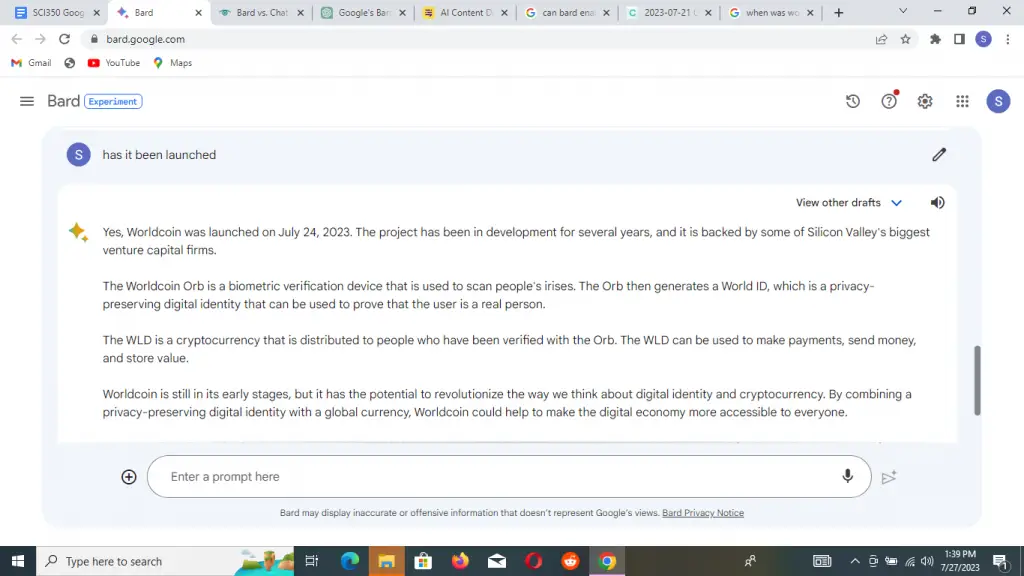
Given my initial experience, I believe that Google Bard AI holds immense promise. It’s already performing exceptionally well, and I’m confident that with continued development and refinement, it’s only going to get better.
This tool appears capable of transforming how we access, understand, and interact with information. I’m excited about the potential this technology holds, and I look forward to seeing how it evolves over time.
What are the Practical Uses and Applications of Bard AI?
This conversational AI model has dialogue applications in several fields. Here are some of the other ways this tool can be utilized:
Applications in Art and Music

Bard AI finds one of its most potent applications in the creative domains of art and music. Artists, songwriters, and musicians can leverage Bard AI for inspiration and assistance in their creative processes.
Songwriting and Music Production
Musicians can use Bard AI to generate original song lyrics, whether they’re facing writer’s block or just want a fresh perspective. The AI’s ability to create contextually relevant and artistically pleasing content could pave the way for unique songs that strike a chord with listeners.
Artistic Collaborations
Artists can collaborate with Bard AI in their creative endeavors, from painting to digital art. For example, they can ask Bard AI to generate a poem based on a specific theme or emotion, and then use that poem as inspiration for their artwork.
Applications in Advertising and Marketing
Bard AI also presents exciting opportunities in the realm of advertising and marketing. With its language generation capabilities, Bard AI can aid in creating catchy and compelling content.
Generating Ad Copies and Slogans
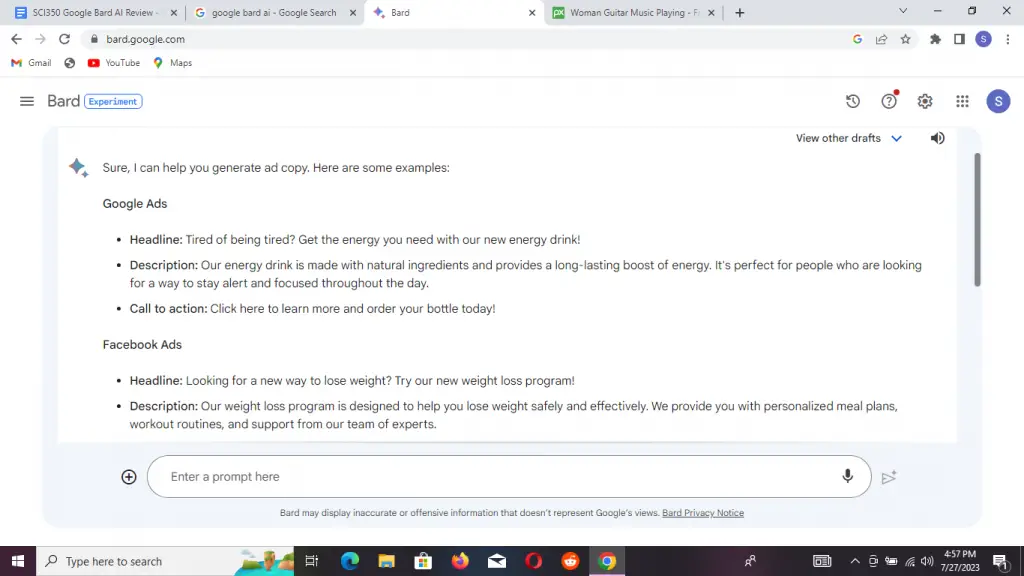
Advertising teams can use Bard AI to craft catchy slogans or ad copies. By providing a brief description or desired emotion, they can generate text that resonates with the target audience, increasing engagement and potentially leading to higher conversions.
Content Marketing
This tool could revolutionize content marketing strategies by generating creative and engaging content. It can be used to generate unique blog post ideas, social media posts, and more, freeing up time for marketers to focus on strategy and implementation.
Applications in Education
Bard AI’s applications also extend to the field of education, providing a valuable tool for teaching and learning.
Teaching Poetry and Songwriting
Educators can leverage Bard AI to teach poetry and songwriting. The AI can generate examples of poems or songs based on specific prompts, helping students understand different writing styles and literary devices.
It can also be used for interactive learning activities, where students input prompts and analyze the AI-generated output.
Learning Language and Literature
Bard AI can serve as an innovative tool for teaching language and literature. By examining how the AI uses language and literary devices, students can gain a deeper understanding of these concepts. They can also interact with the AI to practice their language skills and creativity.
Therapeutic Uses
The therapeutic potential of Bard AI is an intriguing possibility. Although research in this area is still emerging, the use of Bard AI could open up new avenues in therapy and mental health.
Expressive Therapy
Bard AI could be used as a tool in expressive therapy. Patients can interact with the AI, creating poems or songs that allow them to express their feelings. This could serve as a form of catharsis and a way for therapists to gain insights into their patients’ emotions.
Cognitive Stimulation
Bard AI could also be used for cognitive stimulation, particularly for older adults or individuals with cognitive impairments. By interacting with the AI, these individuals can engage in mental exercises that stimulate thinking, memory, and creativity.
Applications in Research
Bard AI’s ability to generate creative language could be a valuable tool for researchers across various disciplines, from humanities to social sciences and beyond.
Linguistic and Literary Research
Researchers in linguistics and literary studies can use Bard AI as a tool for studying language patterns, syntactic structures, and stylistic elements.
They can analyze the AI-generated content to explore how the AI uses and interprets language, providing insights into computational linguistics and AI language models.
Scientific Communication
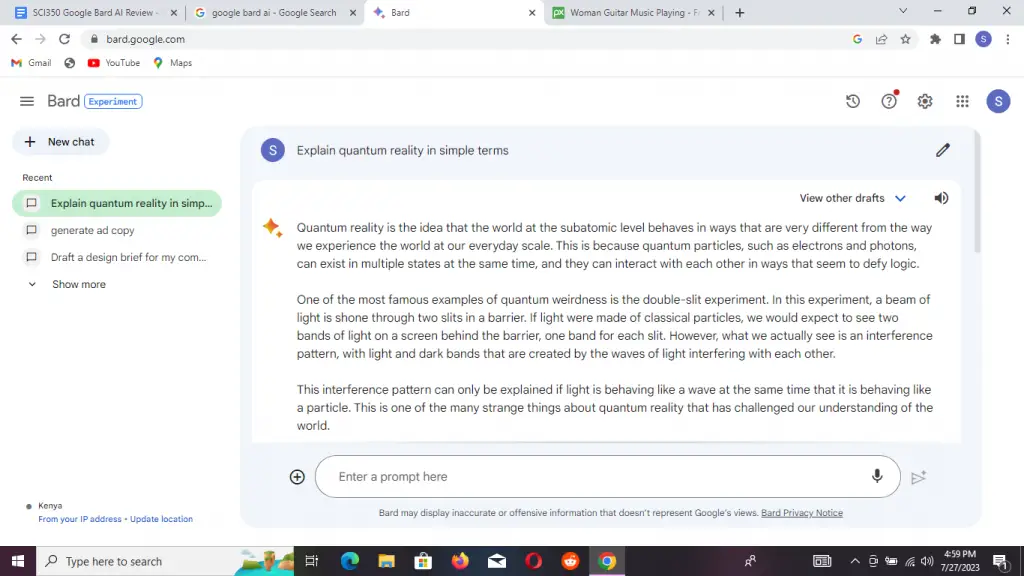
Researchers can also use Bard AI to aid in scientific communication. They can input their complex research findings into Bard AI and ask it to generate a simplified or more engaging explanation. This could help make scientific research more accessible to non-experts.
The following tools can also help you in research.
Are There Any Real-World Case Studies of Bard AI in Use?
As of now, Bard AI is not officially integrated with any external companies. However, Google has expressed openness towards potential partnerships with businesses interested in utilizing Bard AI’s capabilities.
While specific use cases are not yet available due to the ongoing development of Bard, we can speculate on potential real-world applications based on its current capabilities.
How is the User Experience with Bard AI?
Ease of Use
Bard AI’s user interface is designed with simplicity and ease of use in mind. Even users with no prior experience with AI tools can quickly understand how to interact with Bard AI. The tool allows users to input prompts, adjust settings related to the tone and style of the output, and generate content with just a few clicks.
User Feedback
User feedback on Bard AI has been generally positive. Users have praised its creative output, the user-friendly interface, and the tool’s ability to inspire new ideas.
However, as with any tool, there are areas for improvement. Some users have suggested adding more customization options and improving the AI’s ability to understand more complex or abstract prompts.
How Accessible and Available is Bard AI?
Accessibility?
Google’s Bard AI is straightforward to access and available to a broad audience. If you have a personal Google account, you can readily utilize the capabilities of Bard AI.
Simply head to bard.google.com, log in with your Google account, and you can start engaging with Bard AI. Whether you’re keen to ask questions or generate text, Bard AI is ready for your commands.
Availability
Google has made Bard AI available globally, with plans to further extend its reach. It’s part of Google’s mission to make AI tools accessible and useful to everyone, regardless of location or language.
What are the Strengths and Weaknesses of Bard AI?
Google’s Bard AI is an impressive tool with notable strengths and, like all software, some limitations. This section will delve into both aspects, highlighting the features that set Bard AI apart and discussing areas where there’s room for improvement.
Strengths
1. Advanced Text Generation Capabilities
One of Bard AI’s most significant strengths is its advanced text generation capabilities. Equipped with advanced machine learning algorithms, Bard AI can understand and generate complex text.
2. Contextual Understanding
Unlike many AI text generators that produce content based on individual sentences, Bard AI is capable of understanding and generating text in context. This ability allows it to create more coherent and meaningful text, enhancing the overall quality of its output.
3. Multilingual Support
While Bard AI is still in development and doesn’t support all languages, it’s commendable that it already offers support for eight languages. The tool is available in English, French, German, Spanish, Chinese, Japanese, Korean, and Portuguese, making it accessible to a broad global user base.
4. Integration with Google Ecosystem
Being a Google product, Bard AI can be seamlessly integrated into the Google ecosystem. This integration makes Bard AI an especially convenient tool for users already familiar with Google’s suite of products.
Weaknesses
1. Limited Language Support
Despite its multilingual capabilities, Google Bard’s language support remains a limitation. While it supports several widely spoken languages, it doesn’t cover all languages, which may limit its usability for some potential users. However, it’s worth noting that Google plans to expand Bard AI’s language support in the future.
2. Requires Human Oversight
While Bard AI is capable of generating high-quality text, it still requires human oversight to ensure the generated text’s accuracy, relevancy, and appropriateness. This need for human intervention might pose a limitation for users looking for a completely autonomous text generation solution.
3. Not a Replacement for Human Creativity
Google Bard is a powerful tool for generating text, but it cannot replace human creativity. While it can generate unique and interesting text based on the input it receives, the content it produces may not always meet the same standard of creativity and emotional resonance that human-generated content can offer.
4. Ethical Considerations
Bard AI, like other AI technologies, brings with it a set of ethical considerations. There’s a risk that it could be used irresponsibly or unethically, such as generating misleading information or inappropriate content. Users need to employ it with a sense of responsibility and ethical awareness.
How Does Bard AI Ensure Safety and Privacy?

Ensuring user safety and privacy is paramount in the realm of artificial intelligence. The information that follows outlines the ways in which Bard AI is designed to uphold these important principles.
Data Handling
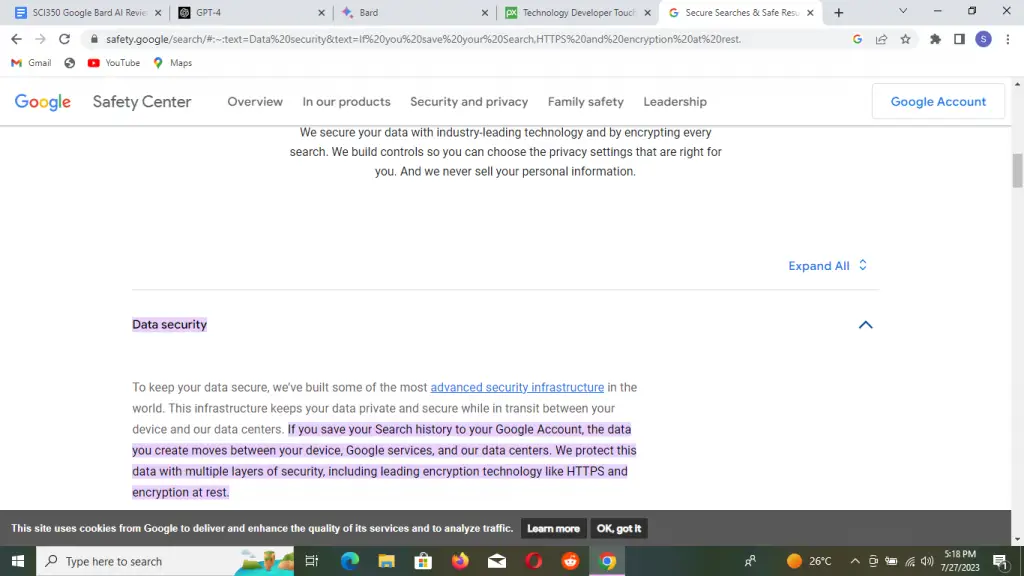
At the heart of any conversation about privacy is the way an application handles user data. Google has a history of prioritizing user data safety, and the development of Bard AI is no exception.
Google utilizes advanced encryption methods to protect user data during both transmission and storage. In addition, any data processed by Bard AI is subjected to Google’s rigorous privacy policies, which strictly prohibit unauthorized access and misuse of data.
It’s also noteworthy to mention that Bard AI, like many of Google’s services, adheres to the principle of data minimization. This means Bard AI only processes the data it needs to function effectively, and unnecessary data collection is avoided.
Automated and Manual Content Checks
As part of its commitment to safety, Bard AI has mechanisms in place to mitigate the risk of generating inappropriate content. This includes both automated systems and manual review processes designed to filter out content that violates Google’s content policies.
These mechanisms ensure that the content generated by Bard AI promotes a safe and respectful environment.
Transparency and User Control
Transparency and user control are other key aspects of privacy. Users of Bard AI are given clear information about how their data is used and they have the ability to control their data preferences.
Google provides users with access to their data and control over how it is used. Users can review and adjust their privacy settings at any time, giving them significant control over their own data.
Security Measures
Google has implemented robust security measures to protect Bard AI and its users from external threats. These measures include, but are not limited to, secure software development practices, regular security audits, and 24/7 monitoring for potential security incidents.
In case of any detected threats, Google’s incident response team promptly works to resolve the issue and ensure user safety.
Continuous Updates and Patches
To ensure ongoing privacy and safety, Google consistently updates Bard AI with the latest security patches. These updates not only protect users against newly identified threats but also improve the overall performance and reliability of Bard AI.
The development team behind Bard AI is committed to continuously enhancing the system to keep user data safe and secure.
What Tutorials and Learning Resources are Available for Bard AI?
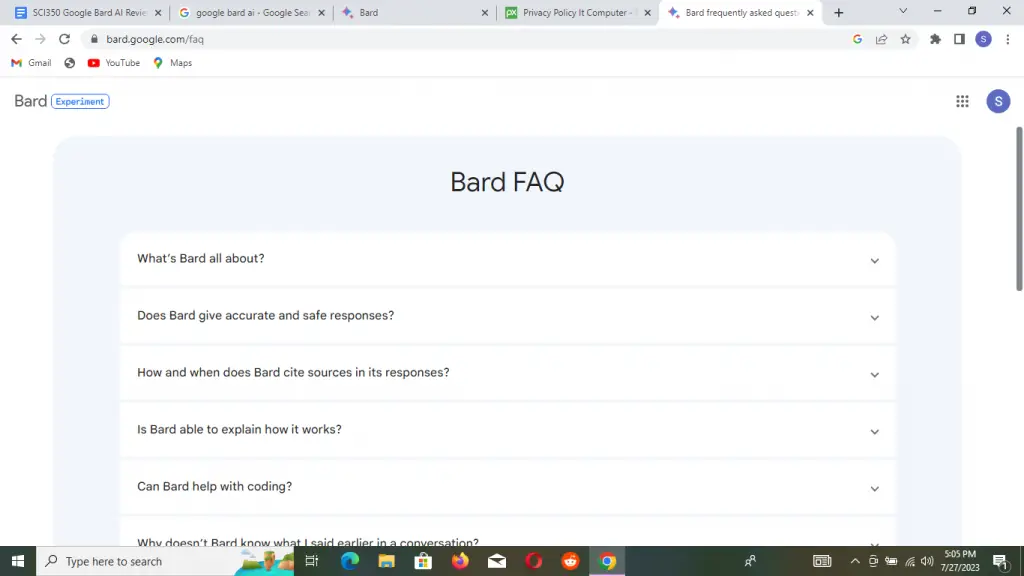
There are a plethora of learning resources for Bard AI, from basic tutorials to in-depth guides. These resources cover everything from getting started with Bard AI to advanced usage techniques. The quality of these resources is high, with clear instructions and examples. Here is an example:
What are the Implications of Bard AI for the Future?

1. Anticipated Future Developments
Bard AI, while already sophisticated, is continuously being refined and updated by Google. We can expect this technology to evolve even further, adding more features, more language support, and improving in its accuracy and responsiveness.
It is likely to improve at such a rapid pace that many people will be left behind.
These developments will likely make it an even more integral tool in various fields, potentially enhancing creative writing, product development, and customer support, among others.
2. Implications for AI Industry Trends
Bard AI is setting a high standard for future AI applications, especially in the field of natural language processing. Its capacity to understand and generate nuanced, contextually-aware text is a significant leap forward.
This could prompt other companies to invest more heavily in their own AI capabilities, leading to a rapid acceleration in AI advancement across the board. Bard AI may well be paving the way for a future where highly sophisticated AI is the norm rather than the exception.
3. Broader Societal Implications
The development and proliferation of advanced AI systems like Bard AI have implications far beyond the technology industry. In society, such AI could reshape how we interact with technology, making it a more natural and integral part of our lives.
For instance, future AI could further blur the lines between human and AI interactions, leading to more personal, tailored, and interactive experiences.
4. Potential Ethical and Legal Considerations
With the rise of advanced AI systems like Bard AI, ethical and legal questions are inevitable. As these systems become increasingly sophisticated and integrated into everyday life, new ethical considerations around data privacy, AI rights, and the potential misuse of AI technology will arise.
Legal frameworks will need to adapt to address these issues and ensure that AI is used responsibly and ethically.
5. Educational and Employment Implications
Bard AI’s advancements in language comprehension and generation could lead to new educational tools and resources, potentially revolutionizing the way we learn languages and process information. However, the increasing sophistication of AI also brings concerns about job
What are the Alternatives to Google Bard?
While Google Bard is an impressive AI tool with a vast array of capabilities, it’s important to note that it’s not the only AI text generation system available on the market. A variety of other platforms also offer strong AI content generation abilities. Let’s delve into a few of the prominent ones:
#1. OpenAI’s GPT-4
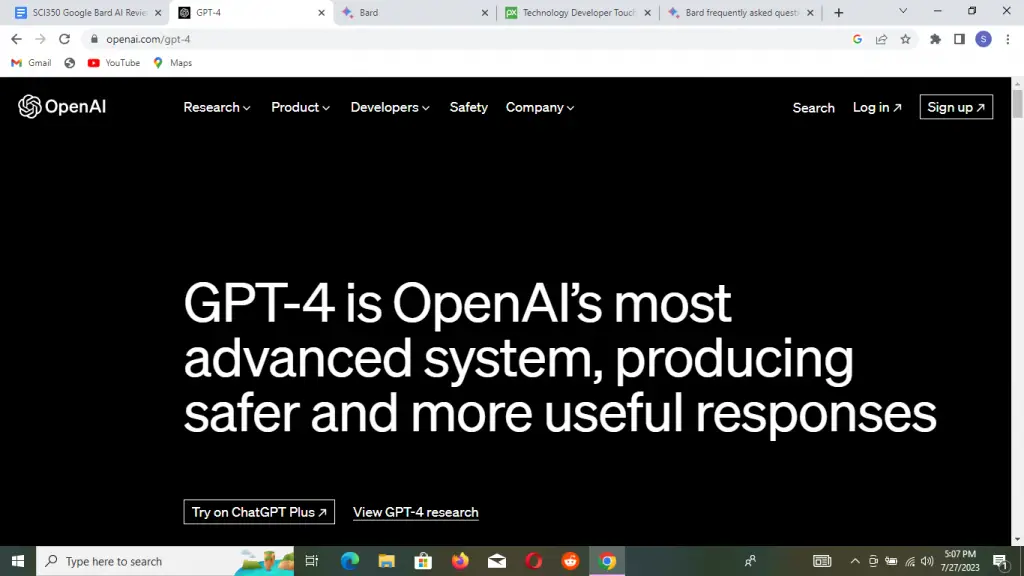
Arguably the most well-known in the AI text generation realm, OpenAI’s GPT-4 is often heralded as a groundbreaking tool. With over 1 trillion learning parameters, GPT-4 is a highly advanced autoregressive language model that uses machine learning to generate human-like text.
It can produce exceptionally coherent and contextually rich content, making it an invaluable tool for a variety of content generation needs. Aside from this, the tool powers Bing Chat, creating a better AI chatbot and search engine.
#2. ChatGPT
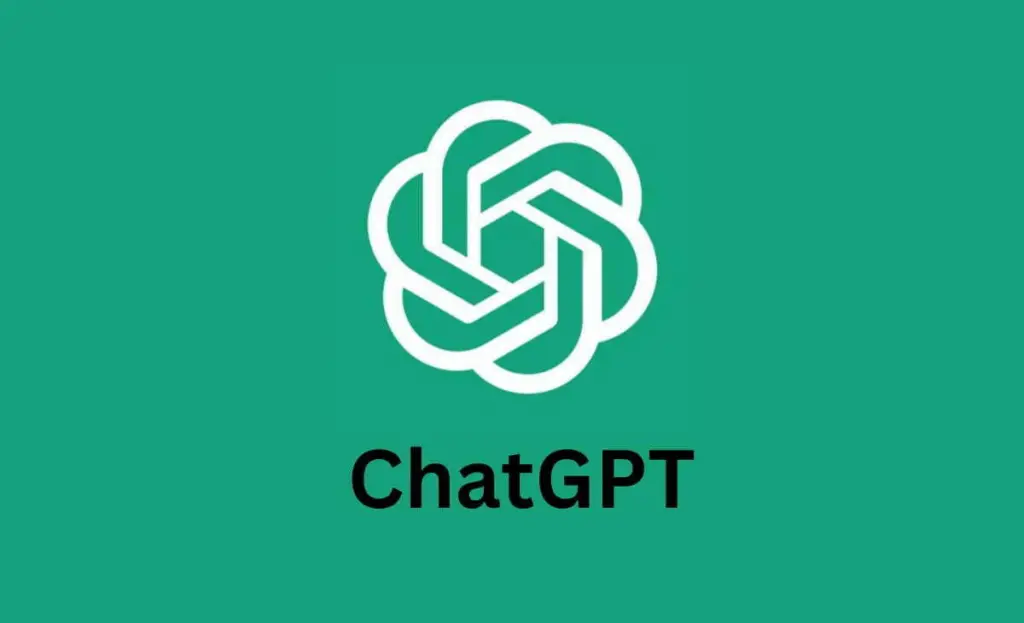
Also developed by OpenAI, ChatGPT is specifically designed for generating dialogues. It is capable of producing contextually relevant responses, making it ideal for creating AI chatbots or other conversational AI applications.
Although it shares technology with GPT-4, it is distinct in its conversational focus and easy-to-use interface.
#3. InferKit
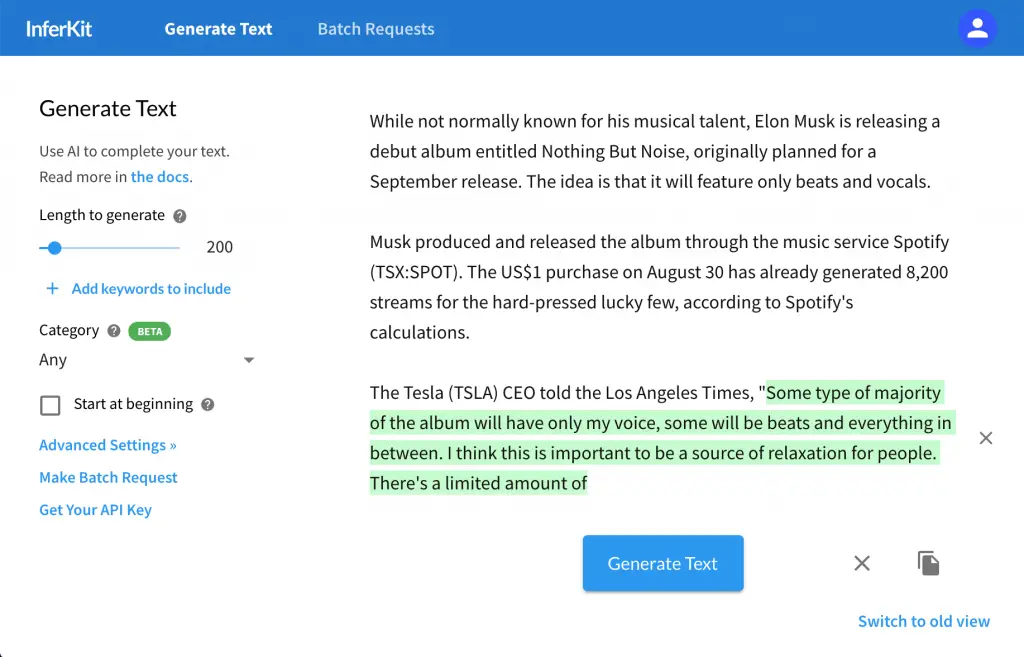
InferKit offers powerful AI text generation capabilities with a strong emphasis on customizability. Users can influence the style, tone, and content of the generated text to a high degree.
It uses deep learning models to generate text and is capable of creating everything from short pieces of content to full-length novels.
#4. ShortlyAI

ShortlyAI positions itself as a writing partner for content creators. It uses GPT-4 technology to assist users in writing content.
Users can provide instructions or prompts, and ShortlyAI will generate relevant content. It is especially well-regarded for its user-friendly interface and context-aware writing abilities.
#5. Jasper by Conversion.ai

Jasper is another AI tool that specializes in content creation. It stands out for its strong focus on marketing copy. With Jasper AI, users can create compelling product descriptions, ad copy, email subject lines, and more.
Its ability to create persuasive and engaging content makes it a valuable tool for marketers and e-commerce professionals. Here is a Jasper AI detailed review.
#6. Copy.ai
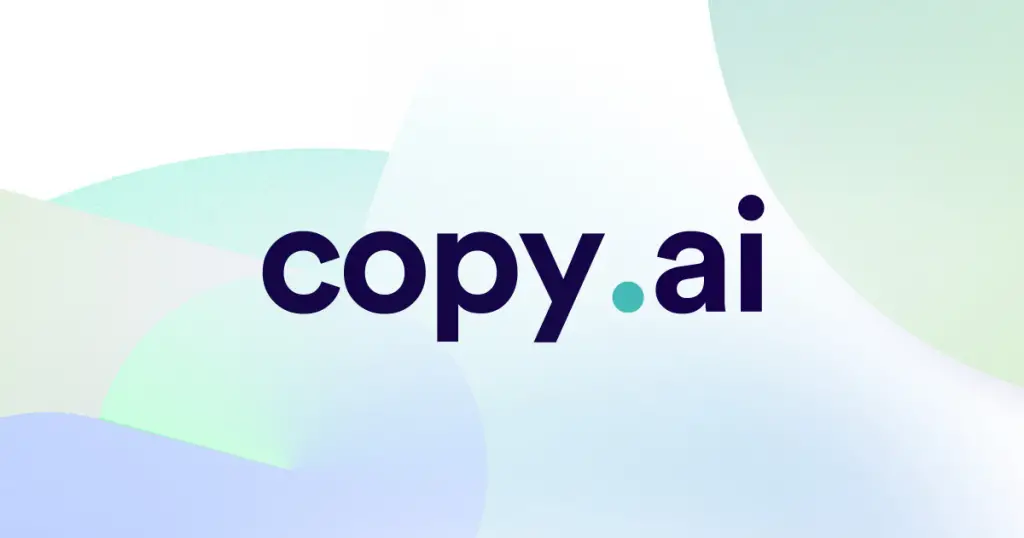
Copy.ai is another powerful AI tool built on GPT-3.5 and GPT-4. It specifically focuses on helping businesses create marketing copy. It can generate a range of content including product descriptions, social media posts, ad copy, taglines, and even blog post ideas.
Its user-friendly interface and specialized focus make it an excellent tool for marketers, especially those without extensive writing experience.
#7. Writesonic
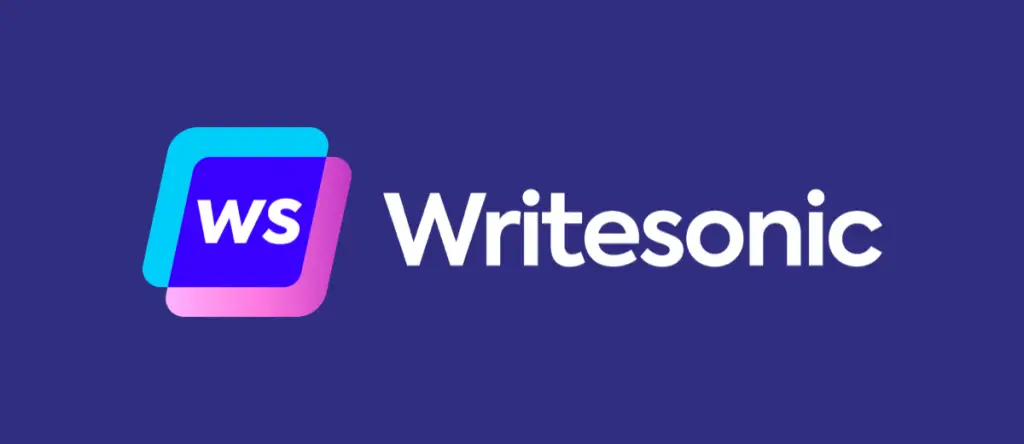
Writesonic is an AI-powered writing assistant that aids in generating high-quality content, including landing pages, ads, product descriptions, and more.
It’s also effective for creating blog outlines and drafts, which can save content creators significant time in the research and ideation process.
Each of these AI tools offers unique features and capabilities. The choice between them and Google Bard would largely depend on the specific task requirements, personal preferences, and desired user experience. While Google Bard excels in many areas, these alternatives provide robust and diverse options for users to consider.
Google Bard Vs. ChatGPT: Which is better?
Comparing Google’s Bard and OpenAI’s ChatGPT, it’s clear that each has its unique strengths and weaknesses, and the best choice would largely depend on the specific needs of the user or task at hand.
Google Bard
Google Bard, based on Google’s PaLM 2 language model, is designed to continuously pull data from the Google search results.
This gives Bard the ability to access the most recent data and current events, making it potentially more effective for tasks that require the latest information. Therefore, it is not just a chatbot.
Pros
- Real-time access to the latest internet data in the search engines
- Is a language model for dialogue
- Better for research purposes
- Can summarize webpages
- Integrated into the Google Workspace such as Google Docs
Cons
- Does not track previous requests
- Can generate AI hallucinations or fabricated information
- Limited number of plugins and integrations
- Sources from the internet aren’t always reliable
ChatGPT
ChatGPT, built on the GPT-3.5 model with GPT-4 generative AI technology available in the paid version, excels in text generation, summarization, and offers better context tracking of conversations.
With the updated ability to access the internet via plugins, ChatGPT is now capable of providing more current information.
Pros
- Superior text writing and summarization skills
- Stores previous conversations for better context
- Can share responses with others
- Offers various plugins and integrations with popular sites and apps
- Access to the internet for current data (through plugins)
Cons
- Need to manually copy and paste articles for summarization
- Responses may be long, making them hard to scan
- Outputs need to be fact-checked to prevent potential misinformation
- More advanced features are not free
If the task primarily involves research or requires up-to-date data, Google Bard might be the better choice. However, for content generation, maintaining conversation context, or leveraging application integrations, ChatGPT may be more suitable.
Both systems continue to improve based on user feedback, so their relative performance may change over time. In any case, users should always be aware of potential misinformation and utilize these tools responsibly.
How does Google Bard compare with Jasper AI?
Google Bard and Jasper AI are two prominent artificial intelligence tools, each bringing unique attributes and capabilities to the table. Both are primarily utilized for content creation, but they exhibit significant differences in terms of reliability, subscription costs, ease of use, availability, and technology used.
Here’s a deeper exploration into how Google Bard compares with Jasper AI:
Reliability
Jasper AI prides itself on its robust support network, including a thriving Facebook community and 24/7 customer service. Its chief selling point is the ability to produce high-quality, accurate information.
This AI writing assistant has proven to be a lifesaver for many marketers and writers operating under tight deadlines. It’s particularly renowned for creating SEO-friendly content swiftly and accurately, free from errors and plagiarism.
On the other hand, Google Bard has faced some criticism for sometimes failing to provide accurate answers on its first attempt. Additionally, it utilizes a version of LaMDA that some perceive as limited.
However, despite these initial criticisms, it has demonstrated reliability as a text editor for difficult and complex tasks, with ongoing improvements expected to enhance its capabilities.
Subscription Cost
Jasper AI offers various subscription packages to cater to different needs. With the introduction of unlimited credits, it provides immense value, especially for heavy users.
Despite the cost, the range of features available, including multiple user logins and over 25 language templates, justifies the price for many users.
Conversely, Google Bard currently operates free of charge, being in its testing stages. While it’s uncertain whether this will change once it’s fully released to the public, as of now, it provides an affordable option for users to engage with AI without financial commitment.
Ease of Use
This is an area where both tools shine, albeit in different ways. Jasper AI is renowned for its user-friendly interface and in-built AI models for content generation.
It also uses advanced AI technology, leveraging GPT-3.5 and GPT-4 models, which are some of the latest in the field. It provides more than 50 content templates, allowing a broad range of applications.
In contrast, Google Bard showcases a comprehensive, user-friendly interface that developers and users find intuitive and easy to use. It also gives access to a wealth of resources and has pre-built models that speed up content customization, making it ideal for users with tight schedules.
Availability
Jasper AI is available to the general public and is widely used by various content creators and businesses. Google Bard AI, while initially only available to select users in a few countries, has significantly expanded its reach and now supports 40 languages across 180 countries and territories.
Technology
The technologies behind these two tools also set them apart. Jasper AI operates on GPT-3.5 and GPT-4 technology, known for their sophisticated language processing capabilities. It also features a built-in plagiarism detector, providing additional assurance for content creators.
Google Bard, on the other hand, utilizes Google’s LaMDA language model and draws from current information to generate content. Although it does not have a built-in plagiarism detector, it boasts a unique ability to summarize and distill complex information into digestible formats.
Therefore, the decision between Google Bard and Jasper AI largely hinges on the specific needs and resources of the user. If you’re a content creator seeking a tool to generate fresh, high-quality content with advanced plagiarism detection and AI technology, Jasper AI might be your best bet.
However, if you’re looking for an AI capable of producing quality results without requiring much tweaking of inputs and are open to a tool that is still being refined and improved, Google Bard could be the way to go.
Conclusion
Bard AI represents a significant leap in creative language generation. Its ease of use, unique capabilities, and wide-ranging applications make it a valuable tool for a variety of users.
While it has its limitations, ongoing developments suggest that Bard AI will only continue to improve.
AI has been successfully incorporated into several fields. And the list will only continue to get bigger. For instance, the James Webb Space telescope uses AI to give us high resolution pictures. Therefore, stayed informed of the advancement in AI.
Frequently Asked Questions
Q1. What is Google Bard AI?
Google Bard AI is an artificial intelligence system developed by Google. It leverages machine learning algorithms to generate creative text, such as poetry and prose.
Bard AI is designed to understand context, rhythm, rhyme, and metaphor, allowing it to create text with a remarkable degree of artistic flair.
Q2. How can I access Google Bard AI?
Accessing Google Bard AI is quite straightforward. All you need is a Google account. Simply navigate to the Bard AI website at https://bard.google.com/, log in with your Google account, and you can start interacting with Bard AI.
You can ask questions, generate text, and explore the various features offered by the platform.
Q3. Which languages does Google Bard AI support?
Google Bard AI has expanded its language support significantly and currently supports 40 different languages. This broad language coverage makes Bard AI a highly accessible and global tool for generating creative text.
Google’s ongoing development efforts suggest that Bard AI may support even more languages in the future.
Q4. How does Google Bard AI compare to other AI text generators?
Google Bard AI stands out due to its focus on generating creative text. While many other AI text generators focus on producing functional text, Bard AI is an excellent tool for generating poetry, songs, and other forms of creative text.
Q5. Is Google Bard AI free to use?
Yes, as of the last update, Google Bard AI is free to use. This makes it a highly accessible tool for anyone interested in AI-generated creative text. However, it’s always a good idea to check the Bard AI website for the latest information, as this could change in the future.
References
[2] https://bard.google.com/faq
[3] https://blog.google/technology/ai/bard-google-ai-search-updates/


